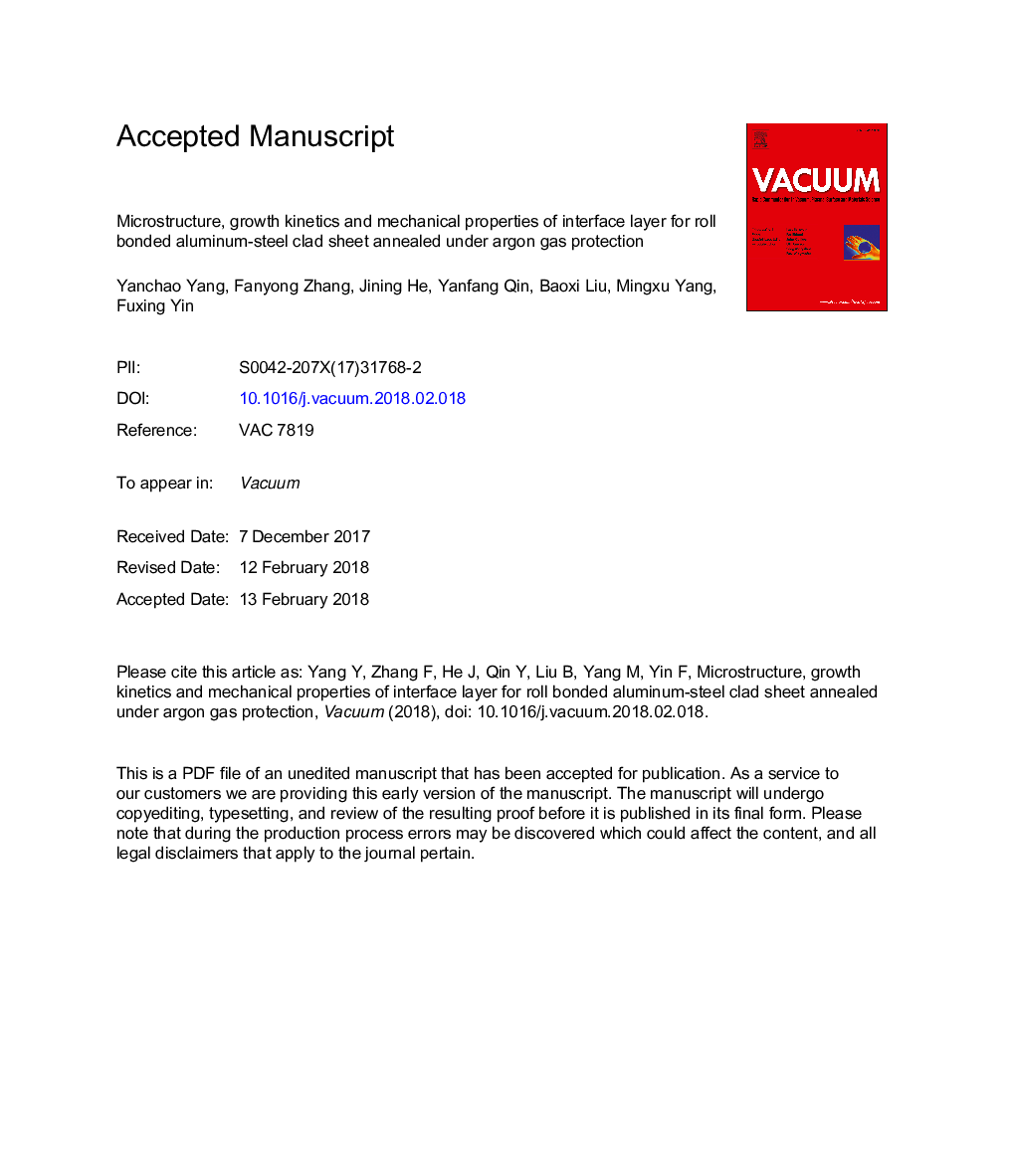| Article ID | Journal | Published Year | Pages | File Type |
|---|---|---|---|---|
| 8044485 | Vacuum | 2018 | 30 Pages |
Abstract
In this paper, an annealing treatment was performed to eliminate the work hardening effect of cold roll-bond clad sheets, and the effect of annealing temperature and time on the microstructure evolution at steel/aluminum interface and mechanical properties of aluminum-steel clad sheet were investigated. Results showed that the longer the time and the higher the temperature are, the thicker the inter-diffusion zone become. Fe2Al5 phase preferentially formed at the inter-diffusion layer at 600â¯Â°C. As the annealing temperature increased, another FeAl3 phase gradually formed. The thickness of intermetallic compound layers over 10â¯Î¼m would seriously deteriorated the mechanical properties of aluminum-steel clad sheet. Furthermore, the relationship of the thickness of inter-diffusion layer with the annealing time and temperature was established, which played a vital role in predicting the working time of aluminum-steel clad sheet.
Related Topics
Physical Sciences and Engineering
Materials Science
Surfaces, Coatings and Films
Authors
Yanchao Yang, Fanyong Zhang, Jining He, Yanfang Qin, Baoxi Liu, Mingxu Yang, Fuxing Yin,
